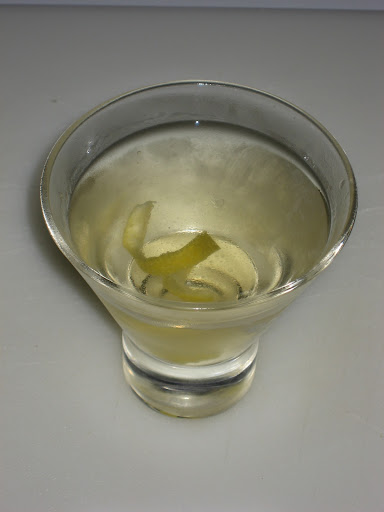AARP Eye Center
Making a Proper Martini
By Marshall Fawley, October 12, 2012 06:00 AM

This may be one of the most shocking posts I've ever written. Like pulling a band-aid off, this is better said quick: that "-tini" you've been drinking for years is not a martini at all! A martini does not contain chocolate, apple, other fruit flavorings (except orange bitters), olives or onions. A martini is made with only three ingredients that cannot be altered, unless you don't want to call the resulting drink a martini. Those ingredients are gin, vermouth and orange bitters.
WAIT!
Hear me out!
To begin with, why did bars start serving all sorts of up drinks (meaning without ice) and tacking "-tini" on the end? My guess is that the V-shaped glass these drinks are served in has something to do with it. Originally, the V-shaped glass was called a "cocktail" glass. However, since it was the serving vessel of what became the wildly popular martini, it was later called a "martini" glass. Because of the popularity of the martini, I believe that bartenders simply add "-tini" to the end of their fruity, sickly sweet concoctions to A) create a sense of familiarity to their drinks and B) utilize the V-shaped vessel.
The martini must be made with gin, never vodka. The botanicals of the gin play harmoniously with the vermouth. If you use vodka, the vermouth would be too overpowering and the drink would be out of balance. Regarding the vermouth, as I wrote in the Manhattan article, you have to use fresh vermouth. I think most people don't like martinis for the same reason they don't like Manhattans -the vermouth used in their drinks was old and oxidized which made the final drink taste horrible. Simply stated, the interplay between gin and a good quality, fresh vermouth is amazing.
Finally, let's talk a little bit about the history of the martini. It began showing up several years after the Manhattan around 1895. Many cocktail books printed in the late-1800's simply replaced the rye of the Manhattan with gin and the martini was born. If you simply ordered a "Martini" at the bar, it was made with sweet vermouth. If you ordered a "Dry Martini" it was made with dry vermouth. Notice the lack of fruit or veggies. My biggest problem with using onions or olives as a garnish in your martini is because 9 times out of 10, these garnishes are at room temperature. Martinis should be served ice cold. If you take an ice cold martini and drop a room temp olive in, you no longer have an ice cold martini.
When if comes to a martini, this is my favorite recipe:
Martini
1.5 ounces gin
1.5 ounces vermouth (sweet or dry)
2 dashes orange bitters
Add all ingredients to an ice filled mixing glass. Stir well for 30 seconds and strain into a chilled cocktail glass. Garnish with a twist of lemon.
Have you had a true martini? What are your thoughts? Let us know in the comments!























































